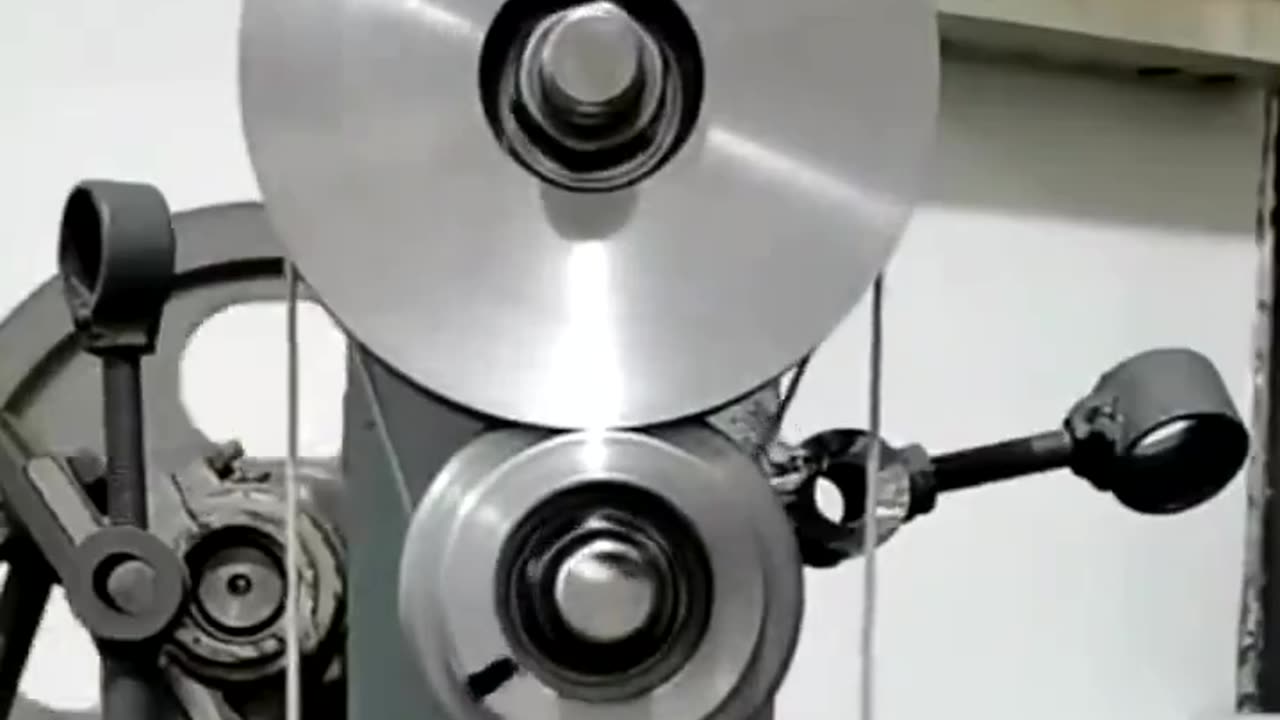Premium Only Content

Elementary physics: Aristotle's wheel paradox reinterpreted.
When a larger and smaller wheel are synchronized at the same point in rotating motion, it typically means that they are connected in a way that allows them to rotate together while maintaining a consistent relationship between their speeds. This synchronization occurs through mechanisms like gears, belts, or direct mechanical linkages.
Here are the key principles behind this synchronization:
1. Gear Ratio: If the two wheels are connected via gears, the larger and smaller wheels rotate in sync, but at different speeds depending on the gear ratio. The gear ratio is determined by the number of teeth on each wheel. For example, if the larger wheel has twice the number of teeth as the smaller wheel, the smaller wheel will complete two rotations for every one rotation of the larger wheel.
2. Angular Velocity: The angular velocity of the wheels will differ based on their sizes. If they are connected by a belt or chain (like in bicycle sprockets), the smaller wheel will rotate faster than the larger one, but both will pass through the same point simultaneously if their rotations are synchronized.
3. Constant Contact: If the wheels are in direct contact (like two gears meshing or wheels rubbing together), they will rotate in opposite directions but pass the same point of contact at the same time.
4. Belt or Chain: When a belt or chain connects two wheels, their rotational speeds are inversely proportional to their diameters. A smaller wheel will rotate faster to cover the same linear distance as a larger wheel, but they stay synchronized because of the fixed length of the belt or chain.
The center sprocket on both has the same diameter. They're moving different-sized circles, but are turning at the same rate in degrees because it's the centers that are rotating. For every 1° the center turns, it moves 1/360 of its circumference, regardless of what length that is, and returns to 0° at the end.
In summary, the synchronization occurs due to the mechanical connection between the wheels, which ensures that while their rotational speeds may differ, they remain in a consistent relationship with one another.
-
 LIVE
LIVE
Slightly Offensive
3 hours ago $2.86 earnedCandace REDPILLS the Masses in BOMBSHELL Theo Von Interview | Guest: Shane Cashman
1,195 watching -
 UPCOMING
UPCOMING
DLDAfterDark
16 minutes agoDLD Live! That Sh... Will Get You K***ed! What To Consider in SHTF
-
 LIVE
LIVE
megimu32
3 hours agoON THE SUBJECT: IRL Streamers Attacked & Nostalgic Animal Movies That Made Us Cry
509 watching -
 1:00:54
1:00:54
The Tom Renz Show
7 hours agoMore Epstein/FBI, a Scary Trade War, & the Dem Echo Chamber
7.49K1 -
 40:43
40:43
Kimberly Guilfoyle
8 hours agoDems Double Down on Delusion-Why? Live with Tony Kinnett & Bo French | Ep.202
77.8K34 -
 1:28:42
1:28:42
Redacted News
6 hours agoBREAKING! SOMETHING BIG IS HAPPENING IN EUROPE ALL OUT WAR IS COMING AGAINST RUSSIA, TRUMP FURIOUS
121K282 -
 47:50
47:50
Candace Show Podcast
6 hours agoBREAKING: Judge Makes Statement Regarding Taylor Swift's Text Messages. | Candace Ep 155
113K113 -
 1:14:23
1:14:23
Josh Pate's College Football Show
3 hours ago $0.29 earnedCFB’s Most Hated Teams | FSU & Clemson Future | Big Ten Win Totals | Star Rankings Overrated?
14.5K -
 1:33:47
1:33:47
CatfishedOnline
5 hours agoGoing Live With Robert - Weekly Recap
27.8K -
 55:18
55:18
LFA TV
1 day agoEurope’s Sudden Turn Against America | TRUMPET DAILY 3.6.25 7PM
32.2K3